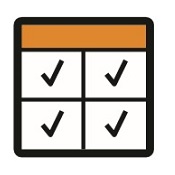 |
 |
Custom Fields
Overview
Custom fields allow administrators to tailor data capture to suit specific business or industry needs. This guide walks you through accessing, configuring, and using custom fields within the Admin area.
Accessing Custom Fields
Understanding Custom Fields
Each main entity type (e.g., Candidates, Companies, Contacts) includes:
- A standard set of fields for general data capture provided by Colleague (off the shelf)
- A Custom Fields tab for storing bespoke information relevant to your business.
Colleague support various data types of Custom Field:
- ✅ Yes/No fields
- 📅 Date fields
- 🔢 Numeric fields
- 📄 Text fields
- 📋 Custom lookup lists
- 🧮 Multi-selection lookup lists
You can organise custom fields into Groups to control layout and improve usability.
You can also enable permission settings to a Custom Field to set whether certain Users can:
- Have full access to see and edit the custom field
- Have read only access to the custom field (cannot make changes)
- Are unable to see the field
Creating Custom Field Groups and Custom Fields
Step 1: Navigate to the Custom Fields area in Admin
Step 2: Create a Custom Field Group
- Click New Group.
- Enter a name of Group
- Click Save.
- The group will appear in the list.
Step 3: Add a Custom Field
- Click New Field.
- Choose a Field Type (e.g., Text).
- Enter a Label (e.g. Example Text Field).
- Set the Display Sequence to determine field order in the Custom Field Group.
- Assign the field to the Custom Field Group.
- Set Allow Selection to Yes if you want the field to be searchable.
- Click Save.
Step 4: Set Permissions on a Custom Field
- Select the new Custom Field
- You will notice a section for Permissions, select the plus sign to Add Custom Field Permission
- Choose the User Group
- Specify the level of access for that User Group
Note: The permissions surrounding access to Custom Fields will work based on the following rules:
- If there are no permissions assigned, the custom field is available to all
- If a custom field is a mandatory field it will be available to all (regardless of permissions)
- If a custom field is set as 'Full Access' to a User Group, it will be 'Read Only' to all other User Groups
- If a custom field is set as 'Read Only' to a User Group, it will not be accessible to other User Groups
- If a custom field is set as 'No Access' to a User Group, the custom field will not be visible to User Group, but visible to others
- If all the custom fields within a Custom Field Group are not accessible to a User Group, it will hide the Custom Field Group
Viewing the Custom Field
- Navigate to a record within the selected entity (e.g. a Candidate).
- Refresh the page.
- The new Custom Field will appear within the Custom Field Group (as per the assigned User Permissions).
- The field is now available across all records.
|







